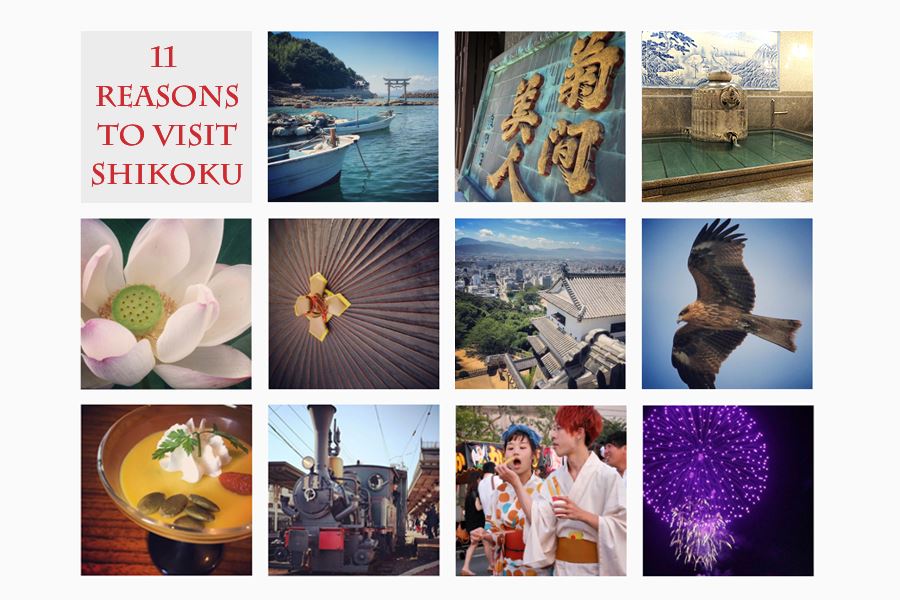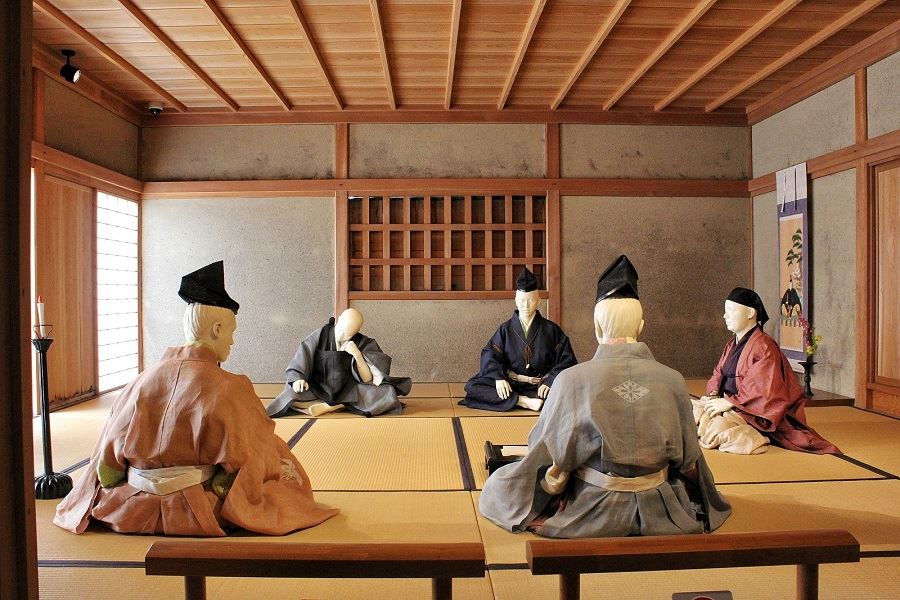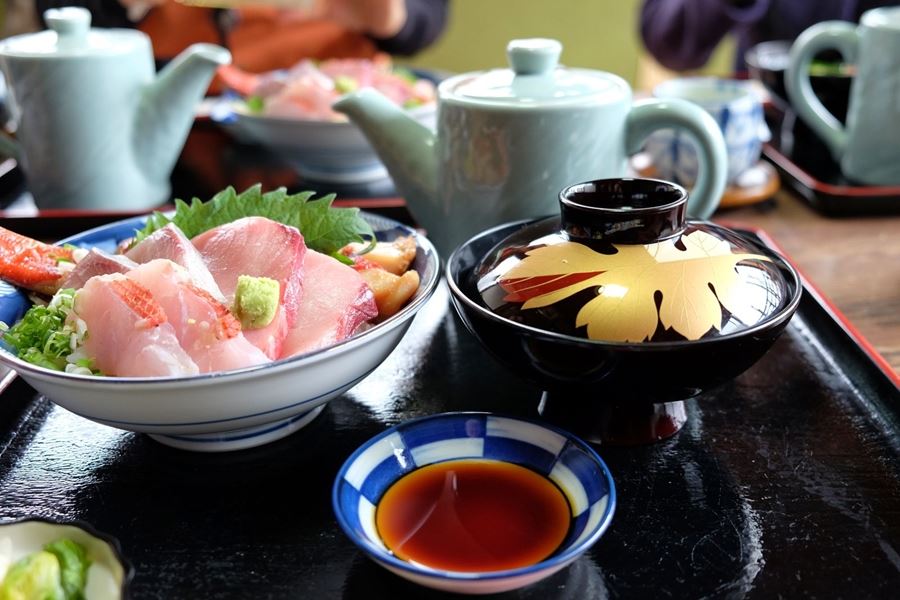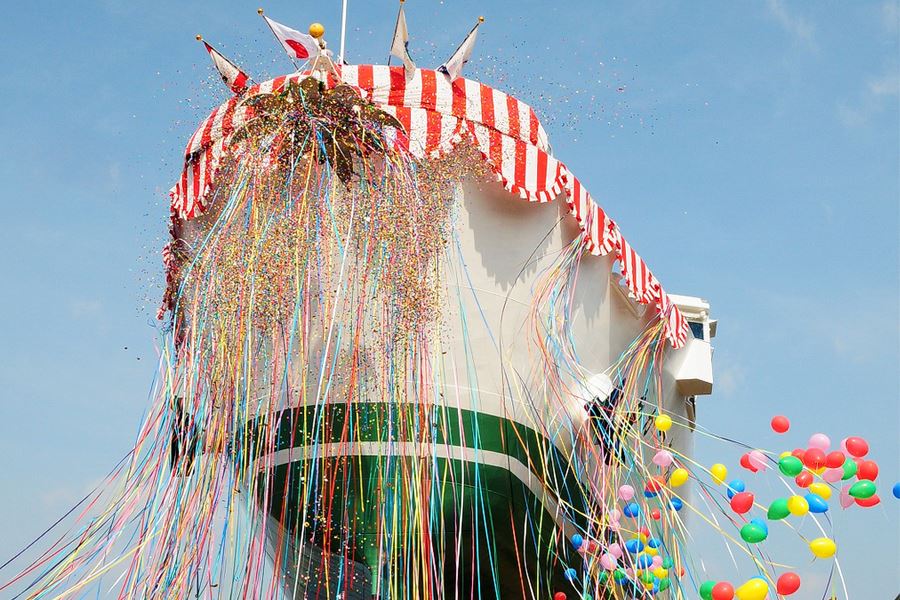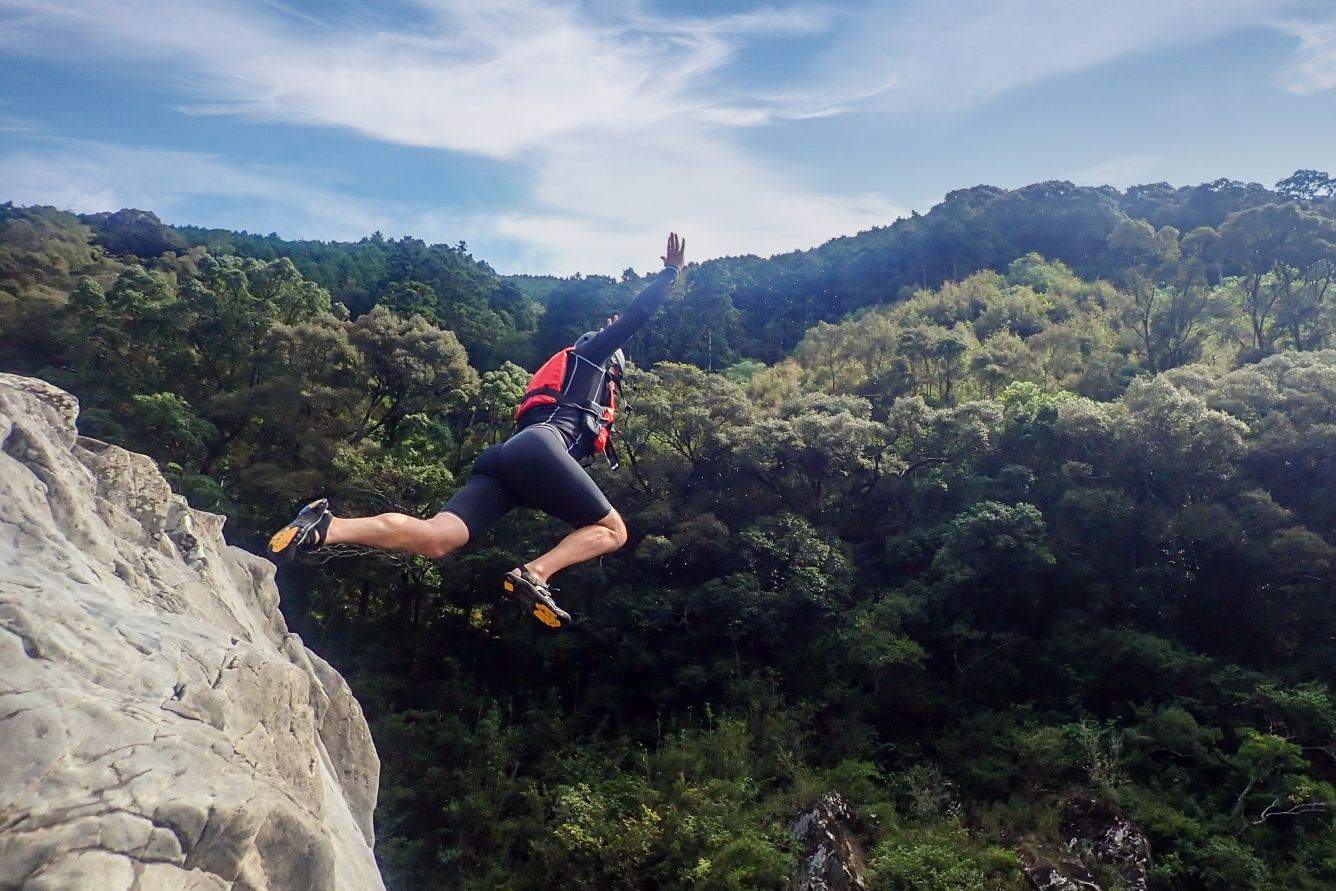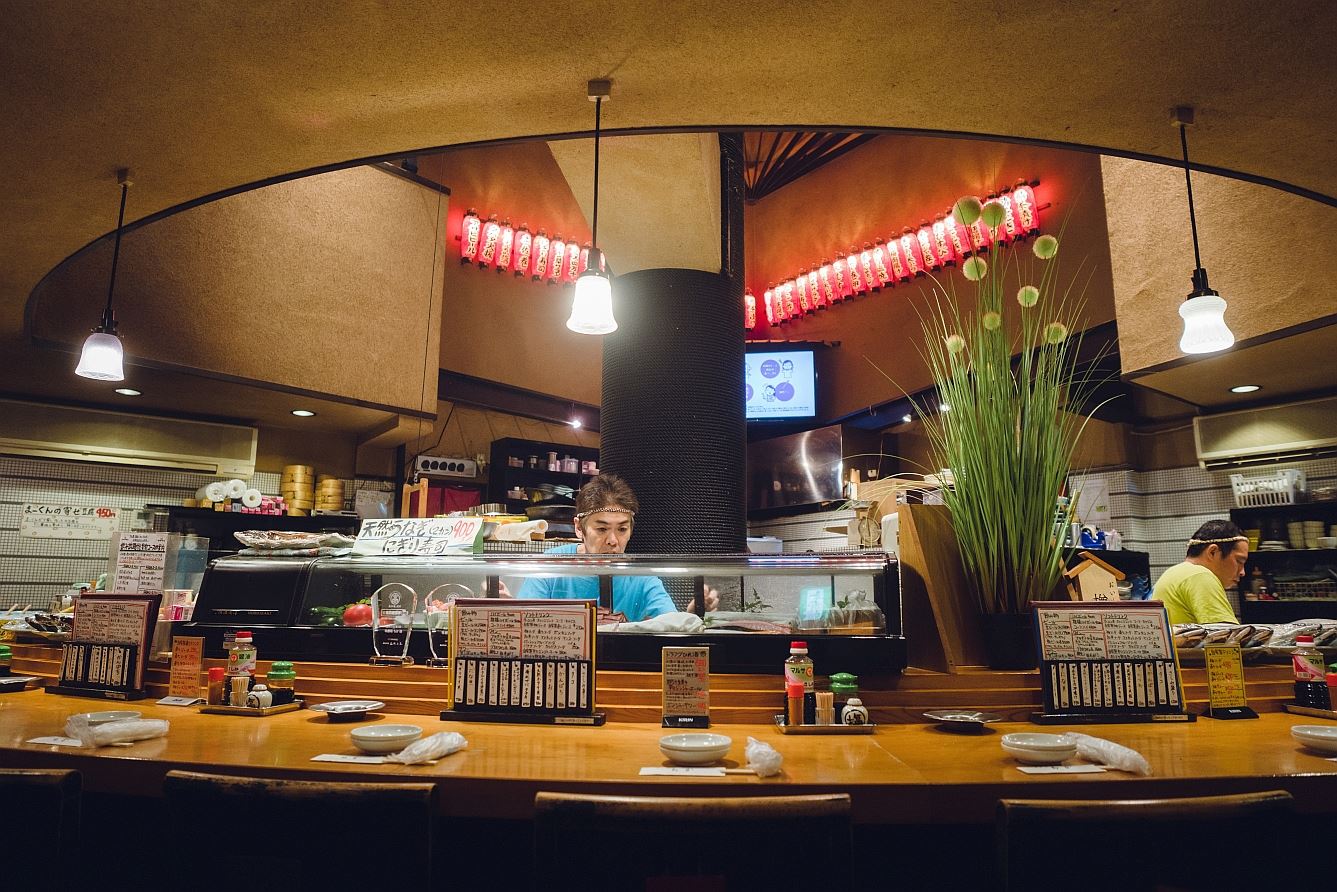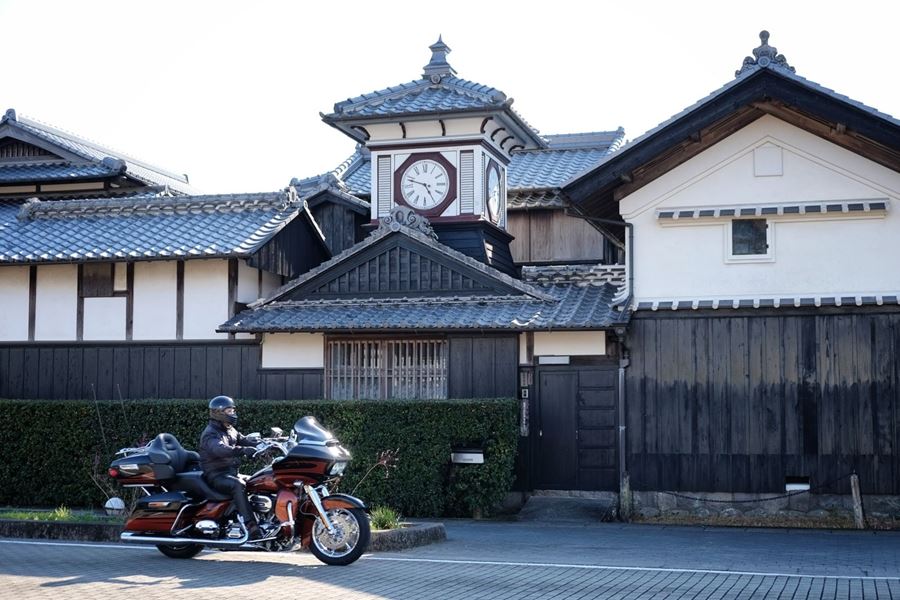Katsuo no Tataki at Kuroshio Ichibankan
Home » Katsuo no Tataki at Kuroshio Ichibankan
Katsuo no Tataki at Kuroshio Ichibankan
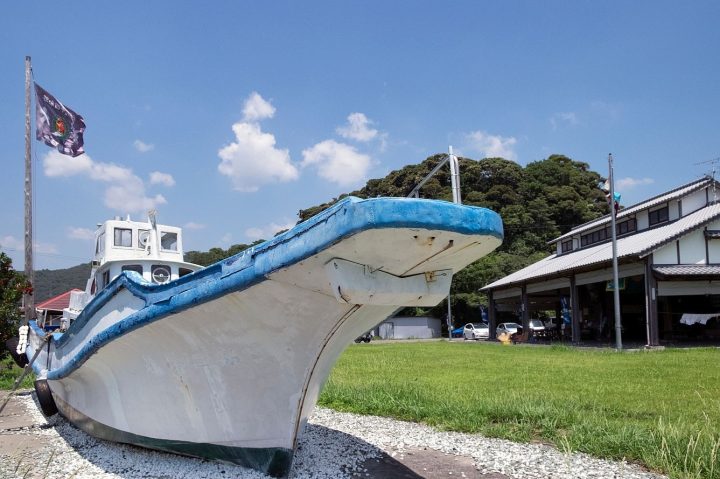
If you’re interested in Kōchi, chances are you’ve eaten katsuo no tataki, the simple but delicious dish of bonito, seared over burning rice straw. This iconic dish is served all over Kōchi. Perhaps you’ve even seen it being prepared behind the counter of an izakaya, or in the popular Hirome Ichiba. As the people of Kōchi say, with katsuo no tataki, fresh is best. Well, there’s no better way to enjoy it fresh than by making it yourself, and eating it on the spot. This is one of the charms of Kuroshio Ichibankan.
Kuroshio Ichibankan is a spacious facility located in a pretty bay and fishing port in Kuroshiocho, facing the vast expanse of the Pacific Ocean. Out to sea, the warm Kuroshio Current runs northwards past the bay, bringing a huge bounty of fish, especially bonito. The moving water is actually visible as a dark line in the water, hence its name ‘the black current’.
Boats leave the port for the Kuroshio Current with their fish holds filled with live sardines, which are used as bait for catching the bonito. When a school of bonito is detected, the fishermen throw the sardines into the sea, and spray the surface of the water with hoses to simulate a great shoal, to attract the bonito. The fishermen then catch the bonito with long fishing rods, one at a time. Coming to the Kuroshio with sardines, they return with bonito. It’s a good trade.
When you arrive at Kuroshio Ichibankan, you’ll notice the wind off the Pacific. In the days before engines, the fishermen would rely on this wind to bring them back to port. The big, colourful flags, and the handtowels hung out to dry, flap vigorously in the wind. And the elderly gent who’ll show you how to make tataki has a string for clipping his hat to his shirt to stop it blowing away.
After the initial greeting, you’re provided with an apron and a bandana, and asked to wash your hands. Then the bonito is brought out. The bonito, a predatory fish, has a primaeval look. It’s a pointed oval shape with a little spiny tail. It looks like a torpedo, or a heavy club. I was told that a medium-sized bonito is tastiest, and ours was of a pleasing medium size.
Now the instruction starts. The elderly gent takes you, the bonito and the knife in hand and guides you in making the various, well-placed incisions. First the fins come off. Everything that’s removed goes into a bucket. Then the guts are removed. The gentleman slices them open to show you how they’re packed tightly with fresh-looking sardines, and he show you the little heart. He identifies your bonito as male, indicated by the yellowish sperm sacs. Then he guides you expertly in removing the head, tail and meat along the flanks. Basically, your job is to provide the muscle while he provides the skill, so nothing goes wrong. The fish knife, created by a local Tosa blacksmith of course, is a marvel of cutting and handling efficiency.
Next comes the searing. A metal can, a huge fork, and some rice straw are produced, and the gent shows you the proper stance for the work to come. The fish and the fork are surprisingly heavy, and the searing takes a little while, so you come to realize the importance of the stance. The rice straw has a distinctive aroma as it burns, infusing the flesh of the bonito.
Finally, it’s time to slice and arrange the seared fish. After showing you how it’s done, the gent leaves this part to you. If the slices are irregular and the seared bits fall off, it’s your fault. But with a sprinkling of chopped chives and sea salt, everything looks pretty good.
We adjourn indoors to enjoy our handiwork for lunch, with a bowl of rice. The katsuo no tataki takes pride of place on the table. But the parts of the bonito that we removed are also served up in various ways, fried, grilled or in a soup, as an accompaniment to the main dish. As they bring them out, the serving ladies tell you what parts they are – the fins, the heart, the belly fat. It’s foodie heaven. Everything is fresh and delicious. This simple, tasty food cries out to be enjoyed with beer or sake. The dedication of the people of Kōchi to this straightforward style of cooking is well understood, and another convert is made.
All photos in the text courtesy of Irwin Wong
Related Tours

Experience the most beautiful and interesting temples of the Shikoku Pilgrimage in seven days.

A tour for families or friends, staying in the most characterful kominka and ryokan of Shikoku.

Visit the most beautiful and interesting temples of the Shikoku Pilgrimage and walk the toughest trails.

